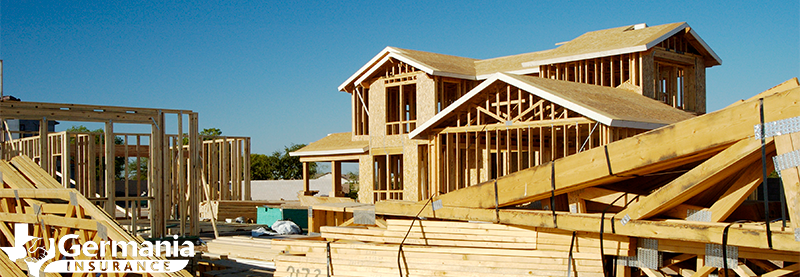Learn how inflation can cause homeowners insurance costs to increase - and what you can do to lower them.

As 2022 draws to a close, it's hard to ignore the fact that the past several years have been difficult for many. Since the pandemic, economic and financial issues have been at the forefront of all Texans' minds as the cost of just about everything rises, and insurance costs are no exception - inflation affects insurance premiums too.
Like all industries, insurance companies across Texas are forced to grapple with increased costs, but the causes behind it might not be clear to all policyholders; you may not see the change in their premium until it's time to renew.
So if you're nearing renewal or even shopping for a new policy you may find yourself wondering, Why did my homeowners insurance go up? Read on today as we take a closer look at how inflation and other economic factors may be affecting insurance premiums.
Why did my homeowners insurance go up?
Out of all the things we buy in life, a house is likely one of the most important - and most expensive. That's why the protection of homeowners insurance is key; we need to know that, should the worst happen, we have the ability to rebuild and move forward. So, when you notice adjustments, changes, or an increase in the cost of your homeowners insurance, it's important to understand why.
Let's take a look at some of the factors that affect homeowners insurance premiums.
Factors that affect homeowners insurance premiums
Like everything, the average cost of homeowners insurance can gradually go up over time in normal economic conditions. It's not uncommon for a policyholder to see small adjustments to their premium upon renewal.
There are a number of factors that play a part in determining your homeowners insurance premium.
- Location and related environmental factors
- Age and condition of the home
- Insurance claims history
- Level of coverage options
- Cost of materials and labor needed to rebuild the home
The cost to rebuild your home after a total loss is perhaps one of the largest determining factors when it comes to how much homeowners insurance costs. In insurance terms, this is called the "Coverage A"
dwelling limit, or "dwelling coverage."
How is dwelling coverage determined?
So we know what dwelling coverage is, but how do insurance companies determine that amount? At first, it may be tempting to think about the market value of your home, but the cost to rebuild and the market value are not always the same.
The market value of your home takes into account many factors, such as the location or neighborhood, the amenities in your community, proximity to schools and public resources, and even the property your home is built on. The cost to rebuild a house, however, is based on a valuation which considers the average costs of building materials and labor costs - the costs necessary to build your home anew.
If economic factors cause the price of building materials and labor to increase, then your dwelling coverage limit will need to increase to account for the difference. Otherwise, your coverage would not be sufficient in the event you need to rebuild after a total loss. As you can imagine, an adjustment to your dwelling coverage means an adjustment in the cost of your homeowners insurance, too.
How inflation affects homeowners insurance
Now that we've established the relationship between dwelling coverage and insurance costs, we can begin to address why those costs have been increasing.
We've all felt the effects of inflation recently, but unless you're involved in the construction or homebuilding industry, you may not have had cause to see just how much building materials costs have increased. Inflation contributes greatly to the rising prices of materials, such as lumber, brick, metal, concrete, shingles, sheetrock, and so on.
Just take a look at the
Quarterly Construction Insights report from CoreLogic to see how dramatic material and labor costs have risen recently. From January '22 to August '22, these materials have seen the following increase:
However, inflation is only the latest in a series of recent events causing these supplies to rise to record highs. Unsurprisingly, material prices began to increase substantially during the COVID-19 pandemic. The global health crisis caused supply chains to suffer causing the availability of even the most basic building materials to climb in the resulting shortage.
Demand also rose sharply, especially in Texas, following the polar vortex which created an immediate need for plumbing materials, sheetrock, wood, and electrical components. Our state has also seen overactive storm seasons in recent years beyond the winter catastrophe, including a multitude of
widespread hail and wind damage events and
even tornado outbreaks.
Lastly, the United States as a whole is experiencing a
labor shortage in the construction sector. While there are many different causes for this the result is the same: It is more expensive to hire construction workers to build (or rebuild) a house.
When you combine all of these different variables, it becomes easy to see how the cost of rebuilding your home - a major factor that affects homeowners insurance costs - has gone up substantially over a short period of time.
What can I do to lower my homeowners insurance costs?
Discounts.
Insurance companies often offer discounts to homeowners who install measures that can reduce the probability of loss. For example:
Combine or bundle coverages. Many carriers, including Germania, offer discounts when you have multiple coverages with the same provider. While this is often seen with home and auto policies, it's important to note that
umbrella and
life insurance can often also be considered for bundling purposes.
Review your coverage with your agent. Talk to your insurance agent and review your existing coverages and limits. You may find that you can lower your homeowners insurance cost by modifying certain options, like your deductible, to better suit your financial needs. However, as you speak with your agent it is essential to make sure that you have
enough coverage.
 Since 1896, Germania has offered quality insurance that Texans trust. For more information about Germania's insurance products, request a free quote online or reach out to your local Germania Authorized Agent today!
Since 1896, Germania has offered quality insurance that Texans trust. For more information about Germania's insurance products, request a free quote online or reach out to your local Germania Authorized Agent today!